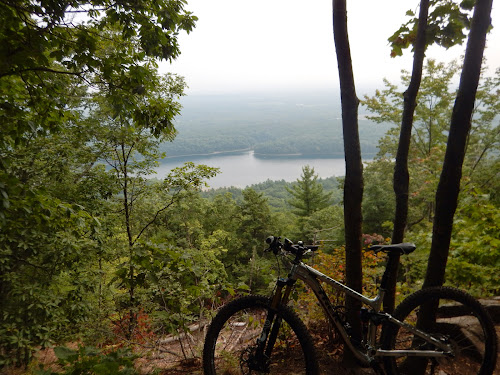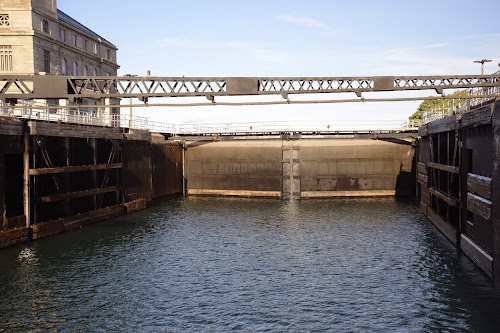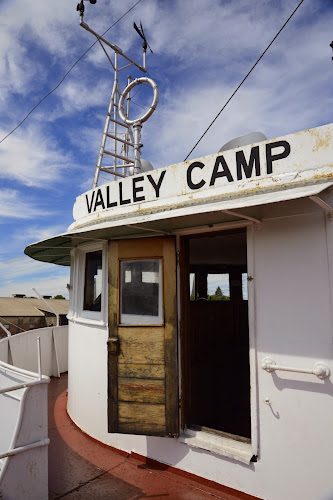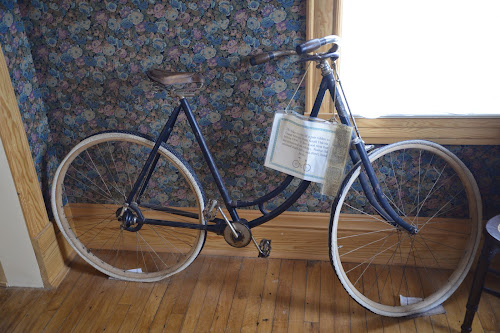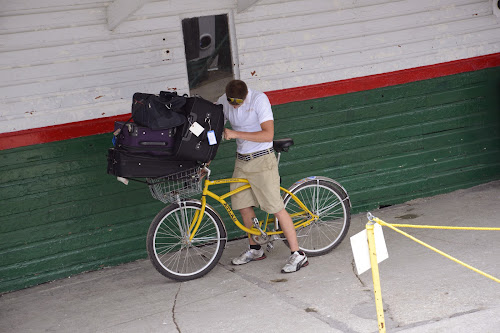Well kind of. But first things first.
Before crossing back into the US we stopped in St. Catherine's, ON. This is the town where my Mom was born and raised long before becoming a Texan. Her dad was a tailor and had a shop downtown. We found the building easily identified with the "Hoffman" name which now houses a bistro. Like most downtown areas this one looks to be struggling but there does appear to be life with many businesses still open. And like most cities this downtown is competing with the "burbs". Still cool to see our name on the building.
The "Hoffman" building
We first crossed back into the states at Niagara Falls. Cynthia had never seen the falls before and it was on our way so we made a quick top. As crowded as ever we only stayed long enough to get a view of the two main falls then we moved on.
The power and beauty is awesome
The "Maid of the Mist" takes you close to the base of the falls
Need I say more?
From here we travelled a little further east to the first of three NY state parks that we stayed in. We stopped for the night close enough that we could easily get to Rochester the next day. There we wanted to go the George Esatman House and to also visit a former colleague of mine that I had not seen in 30+ years. Micheal is a Professor at Rochester Institute of Technology (RIT). Along with other schools RIT has one of the best photo and art schools anywhere. The facilities are amazing and of course the price of tuition goes with those amazing facilities. But as they say you get what you pay for! Also while visitng the schools Cynthia was apple to get an appointment with the curator of the RIT book collection. She presented her handmade book which was well received. Hopefully they will add hers to their collection.
That afternoon we visited the GEH, which is of course the home to the inventor of modern photography and Kodak. His mansion was spectacular and an addition has been built to house the curatorial staff, exhibits spaces and collections.
History of photography room with camera displays and photo exhibit
Music room
Gardens
Newer section at back
From Rochester we continued east driving through the Adirondacks. Late in the day we stopped at Lake Pleaseant and had a wonderful evening on the lake shore being entertained by the ducks swimming by.
Early morning fog on the lake
We had one more stop in NY, near Glen Falls. While driving south we decided to shop for the weekend in the area. I was able to get a bike ride in but in reality it was hike than bike but it was good to get some exercise.
Now for the four states in a day. We left early the next morning and were quickly in New Hamshire, then just an hour or so later we passed into Vermont and then finally into Maine.
Today we arrived in Camden and will be here for a few days. Friday we head to Boothbay for our final family event, the wedding of another cousin. The next Monday we head south or rather southwest, time to get back home. With a few stops on the way we should be back by the end of the month or thereabouts.
More to come...












